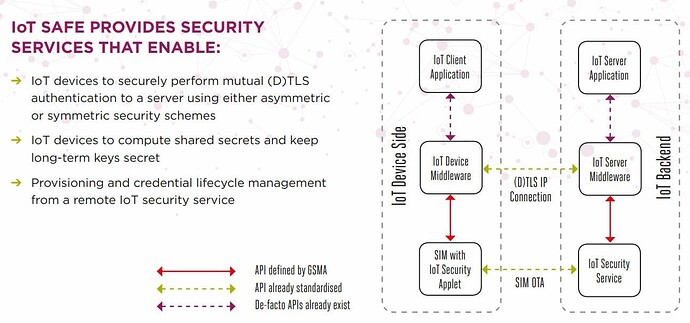Short Answer … Yes. But How ?
In 5G world, infrastructure being virtualized, and cloudified. Subscribers gender ![]() extended to include not only persons with handsets, but, millions of IoT devices fragmented in terms of the OS and chips employed.
extended to include not only persons with handsets, but, millions of IoT devices fragmented in terms of the OS and chips employed.
A recent research issued in Jan 2023 by Scarlett Woodford from Juniper Research declared that IoT market with forecasted billons of connected devices appear as huge business opportunity to MNOs. But also consider as a huge risk if standard security aspects does not implemented carefully.
One of key principles to address IoT threats is to rely on same fundamental subscriber’s identity concept (whether person or thing), it must not be stolen or faked. Using SIM card that resides in any device gives the ability to store sensitive services, ensures all data and keys are stored safely to be shared only with authorized applications and people.
To give maximum flexibility for devices manufacturers, and developers, GSMA replaced the manually pre-provisioned physical SIM with eSIM capable with on demand provisioning process through management platforms in cloud. Additionally, GSMA IoT SAFE initiative specified a group of APIs can be used by any IoT device middleware (Application) to contact with SIM applet in a standardized manner and ensure secure End-to-End Communication between IoT Device and cloud applications.
As per GSMA:
“IoT SAFE (IoT SIM Applet For Secure End-2-End Communication) enables IoT device manufacturers and IoT service providers to leverage the SIM as a robust, scalable and standardized hardware RootofTrust to protect IoT data communications.”
![]() TELUS and CIRA to implement the Thales GSMA IoT SAFE solution.
TELUS and CIRA to implement the Thales GSMA IoT SAFE solution.
![]() Giesecke+Devrient embed GSMA IoT SAFE in its IoT Security Suite to protects data generated from IoT devices.
Giesecke+Devrient embed GSMA IoT SAFE in its IoT Security Suite to protects data generated from IoT devices.
![]() IDEMIA and Kudelski IoT established partnership to provide a turnkey solution based on GSMA IoT SAFE.
IDEMIA and Kudelski IoT established partnership to provide a turnkey solution based on GSMA IoT SAFE.
Credits: ![]()
